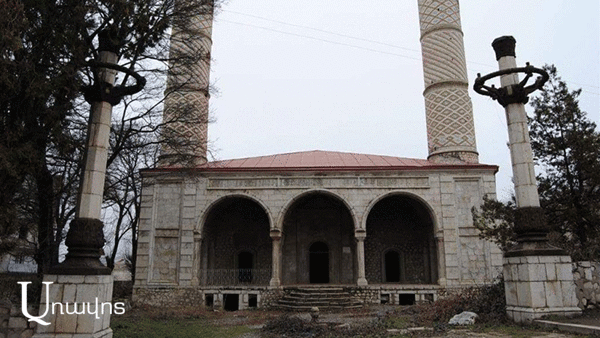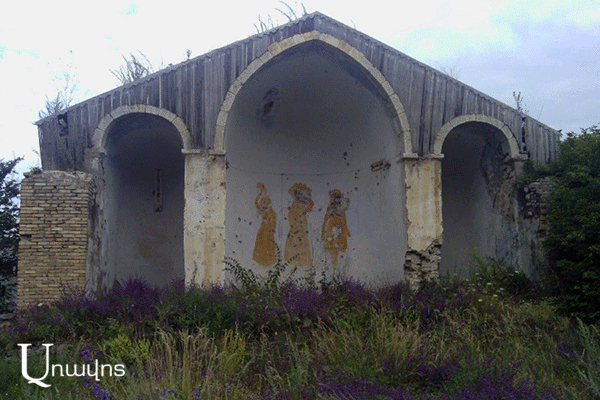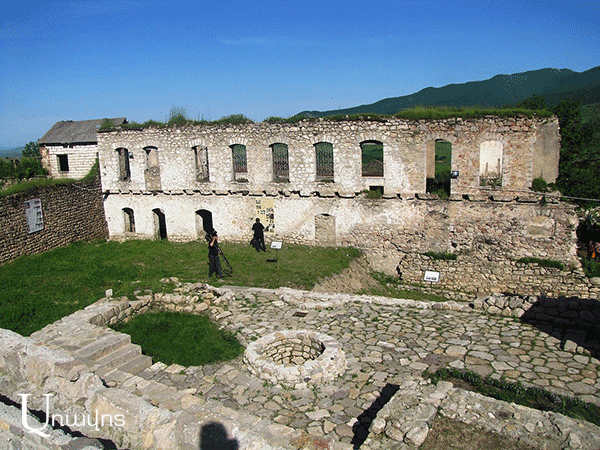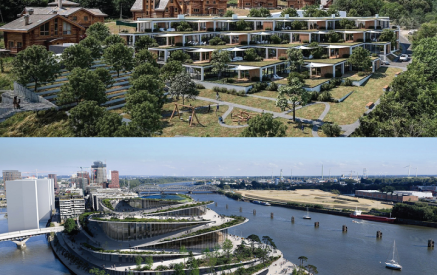Archaeological excavations have been carried out this year in various historical and cultural monuments of Artsakh and in the surrounding. Aravot.am talked about some of those with the head of the expedition, deputy director of the “Service for the Protection of Historical Environment” NSCO, Nzhdeh Yeranyan, who has carried out excavations in those places.
According to him, the year started with excavation works in the territory of the Upper Mosque of Shushi. As it is planned to reconstruct the mosque and the adjacent madrasa (Islamic educational institution, which performs the role of the secondary school and the Islamic spiritual seminary), then according to procedure, before restoring any monument, first of all, excavation works should be performed.
“We have mainly worked in the eastern and western graveyards of the mosque. The brick structure opened in the eastern yard is remarkable, which was probably a water reservoir, where the accumulated water may have been used for the basin in front of the mosque. However, more important is the early Christian burial found during the fastening of the foundation of the madrasa building, which is not the first and only one in Shushi but it is important, because previously discovered early Christian burials have being damaged during construction works, and they have never been confirmed”, explains the expedition leader, and notes that probably, it will be left in its place and will be displayed precisely after the restoration of the building.
Speaking about the works carried out in the Meghretsots Holy Savior Cathedral of Shushi, Nzhdeh Yeranyan says, that the church built in 1839 suffered significant losses during the Armenian-Tatar 1905-1906 clashes, but the greatest damage was caused in the Soviet times by Azeris: “Only the eastern wall of the church was left with altar, and the other walls were completely destroyed, only the 1 meter-deep main walls were left, they had covered that part under the asphalt layer and had turned the church into an open air theatre. As it turned into a cinema, it has been serving as a recreational area for the nearby resorts. In the course of our works, we have removed all layers of asphalt and opened the main walls of the ruined part of the church”. Nzhdeh Yeranyan notes, that as a result it was confirmed that the church had two entrances from the western and southern sides, as was mentioned by Makar Barkhudaryan, but the main entrance was from the southern side, because a very good and luxurious pavement was made.
At the end, speaking about the excavations carried out in the territory of Melik palace in Togh, Nzhdeh Yeranyan notes that an epigraphist, an architect, and an anthropologist are involved in expedition. The excavations take place in the southern courtyard of Saint Hovhannes Church, slightly above the Melik palace. “According to some information, there must be some building adjacent to the church, where the Meliks must have been buried. We conducted excavations around the yard. There are many burials in the south courtyard, there are more than 50 gravestones, in about 300 square kilometres. There is also an adjacent building, which is probably the chapel gravestone mentioned by Makar Barkhudaryan, where most likely Meliks are buried, but it’s still too early to talk about this”, the leader of the expedition notes, and adds that the research is still in progress, and there will be conclusions about that building only when the works are complete.
Davit ABAGHYAN




























































